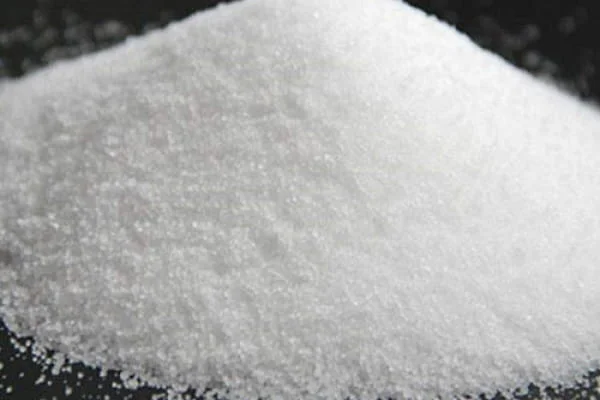What is saltpeter used for in cooking?
You may be wondering what it is and what it does to your food. Saltpeter has been around for years – in fact it is an ancient type of food additive.
Its origin dates as far back as the Prehispanic Mesoamericans’ time when they made tortillas using saltpeter and maize. As for the Chinese, they invented sorbet, which was basically made of chilled syrup and sub-freezed using snow and saltpeter.
But in modern times, saltpeter is used in the meat industry. It serves as a preservative and a means of preventing botulism. Moreover, it is a flavor agent and a color fixative to foods.
Keep reading to learn more about saltpeter and its uses and surprising facts you never knew about it!

What Is Saltpeter Used For In Cooking
Saltpeter is also known as potassium nitrate. This mineral is used for curing ham, as well as different types of preserved fish and meats. When food is cured, this keeps moisture away from it. Thus, bacteria growth can be prevented.
However, there are risks in using saltpeter. For instance, too much of it can be toxic. When the amount used is over 3.5 ounces for every 100 lbs of meat for dry curing or about 7 lbs for every 100 gallons during a liquid cure, it is very toxic. Hence, it needs to be limited to a certain amount.
Additionally, saltpeter is used in preventing botulism. This is a type of bacteria that can lead to food poisoning – a lethal type. Since saltpeter is antimicrobial by nature, it helps in eliminating bacterium that leads to botulism. Furthermore, sodium nitrate is an additive used in commercial processing of meat and also in home curing of fish, beef, and pork.
Saltpeter can also be used as a flavor agent. These nitrates are added to the meat when curing them, which results in a chemical reaction. Thus, the natural pigments found in meat are altered. Thus, it is no longer brown or gray, but a more rosy hue. If you do not add nitrates to your meat, processed meat will end up looking grayish brown, which is not appetizing nor appealing at all.
With that being said, potassium nitrate or saltpeter helps not only in preserving food and keeping it free from bad bacteria. It also improves the appearance of preserved meats.
Is Saltpeter bad for you?
As we have mentioned earlier, saltpeter can be toxic when used in high levels. In fact, this component is used in making explosives and pesticides. This material occurs naturally in soil, as well as in vegetables.
When used excessively, nitrates can cause damage to the vessels, minimize insulin secretion and may even impair your body’s ability to control blood glucose. Therefore, you can be at risk of diabetes and other diseases. With that being said, it is best to cure sausage at home using minimal amounts of saltpeter. Never use it in excess to prevent ailments and health risks linked with it.
It is also worth noting that certain bacteria found in meat can be salt-resistant. Thus, they can create nitrites out of nitrates. This is why there are some food processors that consider the efficiency of using sodium nitrite as a preservative.
But then again, this makes it more complex since the actual active ingredient is not even nitrite but nitric oxide. This is the decomposition product that produces cured meats’ characteristic color. Moreover, this destroys bacteria resulting in botulism.
There have been numerous concerns in using nitrites as food additives. Since the 1960s, researchers have discovered the surprising effects on domestic animals that were fed fish meal containing nitrites. These fish ended up dying because of liver failure. This was due to nitrosamines, which are compounds formed from the chemical reaction between sodium nitrite and amines that naturally occur in fish.
Hence, nitrosamines are powerful cancer-causing components – and this is why having these compounds in foods can lead to numerous health issues to humans. With examinations and studies on foods that were preserved with nitrites, it showed how nitrosamines can form in some conditions. As an example, fried bacon that is cooked crispy means there are such compounds found in these.
The same holds true with meat. As proteins tend to break down while you cook the meat, this results in amines that react with the nitrites and then form nitrosamines. It is why there were studies on trying to curb nitrosamine formation in preserved meats. It was challenging, yet it is possible by adding ascorbic acid or erythorbic acid. These also help to enhance nitrite’s preservative effects as it promotes nitric oxide conversion. Therefore, less nitrite is required.
Nowadays, the amount of nitrite in cured foods has become much less. It is calculated to be under 100 parts for every million. This is why there is significant reduction in nitrosamine formation in the food we eat.
It is worth noting that we normally ingest amines and nitrites in food. This is why a combination of these compounds can be quite carcinogenic. When combined with the acids in the stomach, it can be bad for the health.
Studies show that consuming over 3 servings of nitrite-loaded processed meats per week can increase the risk of developing stomach cancer, as compared to eating 1.5 servings or less each week.
Bottom Line
Overall, saltpeter is a useful preservative and color agent for processed meats. It helps to prevent botulism as it kills bacteria that can lead to food poisoning, which can be lethal. However, there are risks to consuming too much processed foods that contain saltpeter. This is why it is best to keep it at a minimum level based on the recommendations by health experts. Most importantly, be sure that you eat a balanced diet to prevent such health risks.






